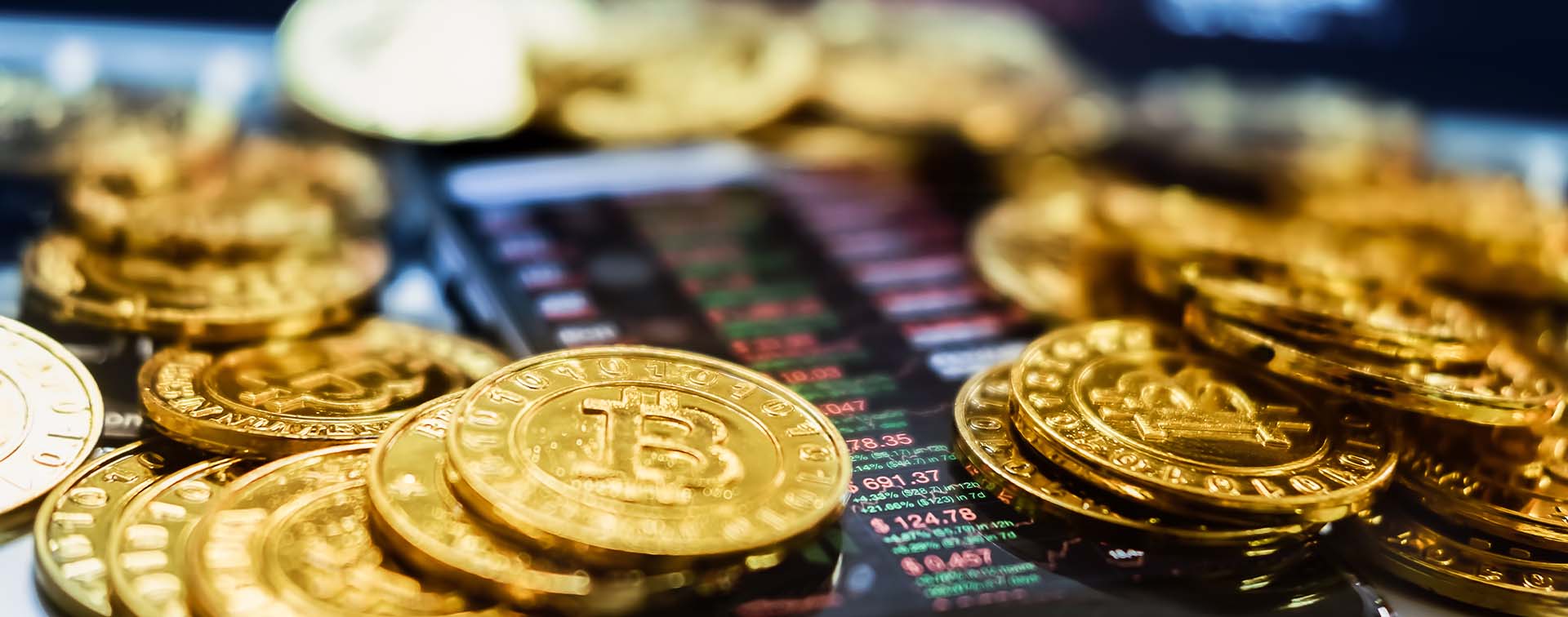
Dominic Weibel is Head of Research at Bitcoin Suisse AG.
Decentralized finance (DeFi) has rapidly evolved from a niche concept to a burgeoning industry with the potential to rouse the global financial landscape. We’ve witnessed firsthand how DeFi is revolutionizing financial systems, particularly in the realm of real rates of return — a critical factor for institutional investors and high-net-worth individuals seeking to preserve and grow wealth in today’s challenging economic environment. Below, we will highlight DeFi’s previous growth phase, its dual nature of being attractive in both risk-on and risk-off economic cycle phases, and its current place in the broader financial system.
At its core DeFi leverages blockchain technology to create open, permissionless, and transparent financial ecosystems, impossible on traditional rails that rely on centralized intermediaries. DeFi utilizes smart contracts and decentralized applications running atop blockchains to facilitate a wide array of financial services. This paradigm shift not only eliminates middlemen, reducing costs while increasing efficiency, but also democratizes access to sophisticated financial tools across the globe. Its disruptive potential rests on an array of important primitives1 that foster 24/7 market operations, rapid innovation loops, global accessibility, capital efficiency, and reduced counterparty risk in the traditional sense, allowing nobody to temper with the system:

DeFi’s core tenets of transparency, accessibility, and financial inclusion have attracted a growing cohort of investors and ecosystem participants. From a nascent idea with less than USD 1 billion of capital held within DeFi in early 2020, the Total Value Locked (TVL) had surged to around USD 100 billion at the time of writing. If we include leverage strategies such as Liquid Staking, Pool 2 assets, and borrowing, the TVL climbs to USD 150 billion. While the market has experienced volatility, the underlying trend remains robust, driven by continuous innovation and increasing adoption.
Central to DeFi's appeal is its ability to offer attractive yield opportunities across different phases of economic cycles as well as previously inaccessible real rate opportunities with superior returns. This remarkable duality positions DeFi as a versatile tool in wealth creation strategies, capable of delivering value in both contractionary and expansionary monetary policy environments. It also creates a compelling case for institutional involvement in DeFi across all market conditions and offers a potential hedge against traditional market cycles while providing opportunities for alpha generation that are increasingly rare in traditional finance.
In periods of contractionary monetary policy, the tokenization of real-world assets such as US Treasuries offers a new source of sustainable yield to on-chain citizens. In expansionary periods, that markets are pricing in for Q4 2024, on-chain yield opportunities historically outshine traditional ones, which in turn attracts institutional interest as opportunities run dry on the traditional front. Here, the composability of DeFi protocols allows for the creation of smart yield strategies that can capitalize on expansionary conditions. In previous expansionary conditions, we observed increased liquidity in DeFi protocols that enabled larger institutional positions without significant slippage. At the same time, capital inflows during these periods fuelled rapid innovation, creating new yield-generating strategies and products in turn. We project these catalysts to materialize within the upcoming easing cycle as well.
As the next easing cycle inches closer, traditional financial instruments are notorious for struggling to achieve positive real returns, in particular in the all too common zero interest rate realm we have seen throughout the last decade. In this environment, DeFi has proven to offer attractive yield opportunities and emerged as a compelling option for investors who seek alternative sources of yield.
Decentralized exchanges have furthermore revolutionized asset trading, offering liquidity and price discovery without the need for centralized order books. Lending and borrowing protocols have created efficient markets for vanilla crypto and tokenized assets, often yielding returns that far outstrip those available in traditional financial markets. Meanwhile, peer-to-peer lending models also hold the potential to increase financial inclusion by providing credit access to underserved populations.
Among key DeFi strategies, we count:
These strategies have consistently offered attractive annual percentage yields (APY), often ranging from 5% to 20% or even higher. Even accounting for the higher volatility and risk profile of the underlying strategies, these rates can translate to substantial real returns that can outpace those of traditional finance. As always, higher potential returns usually come with an increased relative risk, while at the same time these rather nascent DeFi strategies currently tend to be less efficient than their mature traditional peers, which results in elevated returns. While DeFi presents unprecedented opportunities for wealth creation, it is crucial for high-net-worth individuals to understand both the potential rewards and the associated risks as they shapeshift from traditional risks such as counterparty to a new set of risks such as smart contract risk.
For the seasoned market participant keen to explore the economic duality of DeFi, cycle-adaptive portfolio strategies that dynamically adjust to altering monetary conditions appear highly attractive. Strategic approaches can moreover include cross-chain diversification, yield optimization, tokenizing proprietary assets, and sound on-chain risk management.
As outlined before, the current tight monetary conditions heavily accelerated the tokenization of off-chain assets due to increased on-chain demand. Tokenized assets can be utilized within DeFi protocols to create yield-bearing instruments that are particularly valuable during periods of economic contraction. For instance, tokenized US treasuries jumped from <USD 0.1 billion to USD 1.9 billion following the onset of the US Federal Reserve’s rate-hike cycle. As a key pillar of crypto adoption, BlackRock’s BUIDL, a tokenized treasury fund, crossed USD 500 million and Goldman Sachs revealed plans to launch three tokenization projects by the end of the year. We observe tangible benefits ranging from liquidity for traditionally illiquid assets, fractional ownership, increased financial inclusion via tokenized dollars and treasuries, to more efficient processes that enable lower cost or settlement windows. A steeper growth rate hinges on overcoming more regulatory hurdles, an area that is improving consistently. Institutional involvement in digital assets from financial powerhouses is growing for a reason, and as regulatory frameworks evolve, arguably this trend will accelerate. As such, we expect to see consistent growth along key areas within commodities, real estate, US Treasuries, private equity, stocks, carbon credits, global bonds, tokenized dollars, and hybrid products. While there are various obstacles along regulation and infrastructure to master, the area is primed for parabolic growth. Boston Consulting Group estimates illiquid asset tokenization to become a USD 16 trillion market by 2030.
An overlooked aspect of DeFi: it is battle tested across many years of high volatility and includes the most profitable protocols by fees. Aave never stopped facilitating loans, Uniswap never stopped trading during volatility spikes, MakerDAO never stopped minting Dai, and Curve never stopped providing low slippage on stablecoins. The DeFi space just recently handled USD 350 million of liquidations in the drawdown without blinking.
It is increasingly evident that DeFi is not merely a disruptive force across its financial peers but a catalyst for wealth creation offering compelling yields across varying economic conditions. As the DeFi sector matures, we anticipate increased institutional adoption, driven by improved regulatory clarity and the development of more sophisticated infrastructure. The lines between DeFi and traditional finance are bound to blur further with increased tokenization of real-world assets and the emergence of hybrid financial products that combine the best of both worlds. We project that DeFi strategies will play an increasingly significant role in the positioning of more advanced investors.
Note
1 Primitives are novel fundamental building blocks or concepts that can be used to construct more complex and disruptive systems.
Henley & Partners assists international clients in obtaining residence and citizenship under the respective programs. Contact us to arrange an initial private consultation.

Have one of our qualified advisors contact you today.
We use cookies to give you the best possible experience. Click 'Accept all' to proceed as specified, or click 'Allow selection' to choose the types of cookies you will accept. For more information, please visit our Cookie Policy.